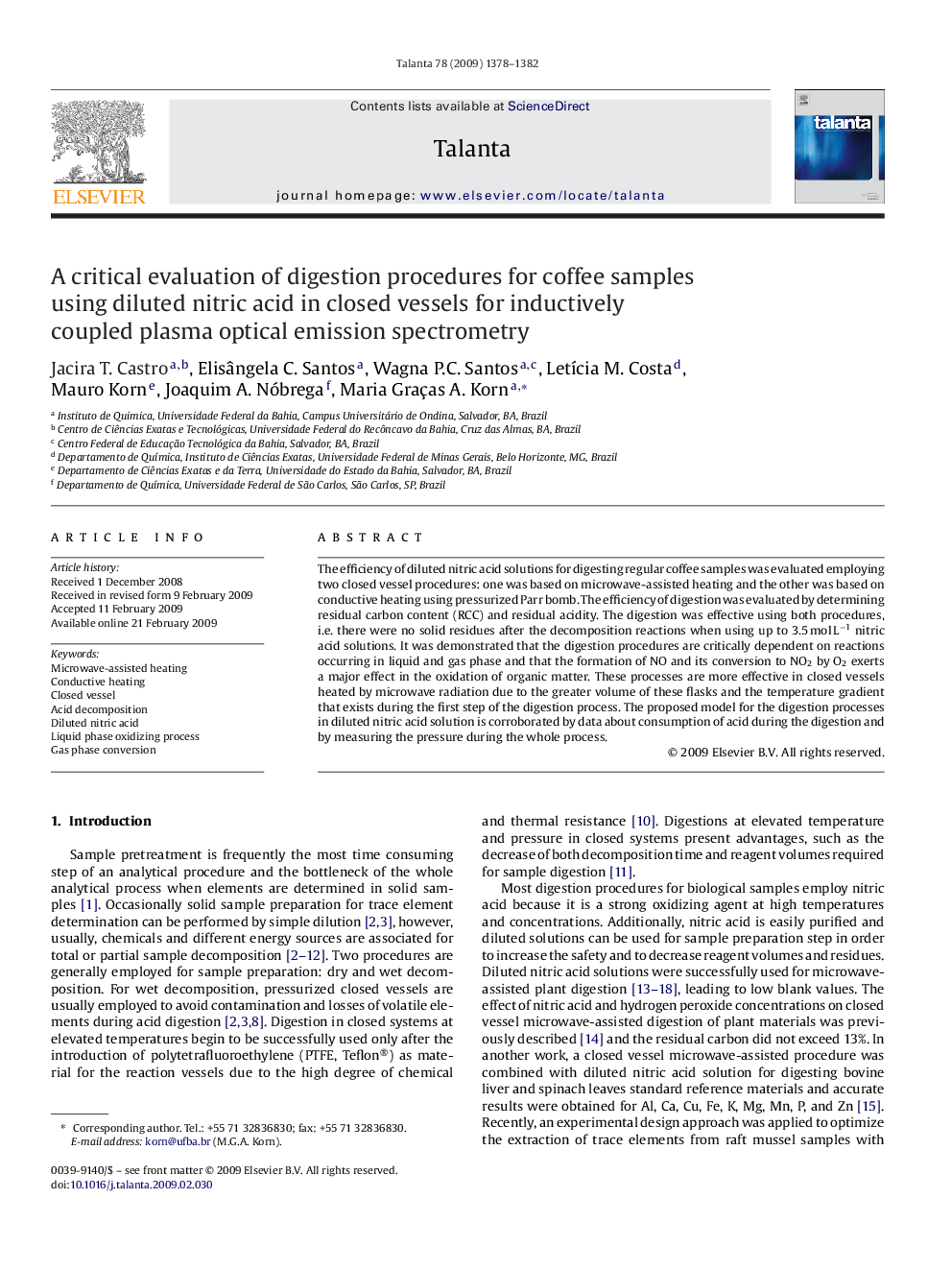| Article ID | Journal | Published Year | Pages | File Type |
|---|---|---|---|---|
| 1246886 | Talanta | 2009 | 5 Pages |
The efficiency of diluted nitric acid solutions for digesting regular coffee samples was evaluated employing two closed vessel procedures: one was based on microwave-assisted heating and the other was based on conductive heating using pressurized Parr bomb. The efficiency of digestion was evaluated by determining residual carbon content (RCC) and residual acidity. The digestion was effective using both procedures, i.e. there were no solid residues after the decomposition reactions when using up to 3.5 mol L−1 nitric acid solutions. It was demonstrated that the digestion procedures are critically dependent on reactions occurring in liquid and gas phase and that the formation of NO and its conversion to NO2 by O2 exerts a major effect in the oxidation of organic matter. These processes are more effective in closed vessels heated by microwave radiation due to the greater volume of these flasks and the temperature gradient that exists during the first step of the digestion process. The proposed model for the digestion processes in diluted nitric acid solution is corroborated by data about consumption of acid during the digestion and by measuring the pressure during the whole process.
